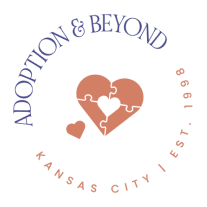You may be wondering if it’s really necessary to be so selective when choosing adoptive parents for an open adoption.
After all, isn’t any loving and caring family suitable for a child?
While it’s true that love and care are essential, there are several factors that contribute to the long-term success of open adoptions.
In this discussion, we will explore the importance of understanding open adoption dynamics, compatibility in parenting styles, shared values and beliefs, commitment to communication and transparency, emotional stability and support, as well as the willingness to honor birth family boundaries.
By considering these aspects, you can ensure the best possible outcome for both the child and the birth family.
Key Takeaways
- Open and honest communication is crucial for the success of an open adoption.
- Compatibility in parenting styles creates a cohesive and supportive environment for the child.
- Shared values and beliefs between birth parents and adoptive parents help create unity and understanding.
- Respecting birth family boundaries and prioritizing the well-being and needs of the birth family is vital in open adoption.
Understanding Open Adoption Dynamics
To fully comprehend open adoption dynamics, it’s important to understand the unique dynamics that come into play when adoptive parents embark on this journey. Open adoption, with its emphasis on communication and connection, offers several benefits for children. One of the primary advantages is the opportunity for children to have a sense of belonging and identity. By maintaining contact with their birth families, children in open adoptions can develop a deeper understanding of their roots, heritage, and cultural background. This knowledge can contribute to their overall well-being and self-esteem.
Building trust and communication are key elements in open adoption. Adoptive parents play a crucial role in establishing and maintaining this trust. By openly discussing the adoption process with their children, adoptive parents create a safe space for open and honest communication. This helps children feel heard, validated and understood. Regular contact and ongoing conversations between adoptive parents and birth families foster a sense of trust, allowing children to develop strong relationships with both sets of parents.
Open adoption also provides children with the opportunity to maintain important connections with their biological relatives. These relationships can offer support, guidance, and a sense of belonging. In addition, open adoption allows for the sharing of medical history and other important information that may impact a child’s well-being.
Compatibility in Parenting Styles
When it comes to open adoption, one crucial factor for success is compatibility in parenting styles.
It’s important for adoptive parents to have harmonious parenting approaches, ensuring a cohesive and supportive environment for the child.
Consistency in parenting is also key, as it helps create stability and a sense of security for the child.
Parenting Style Compatibility
Successfully navigating open adoption requires compatibility in parenting styles. When choosing adoptive parents, it’s essential to consider how their parenting style aligns with your own. Parenting style compatibility plays a crucial role in the emotional well-being of the child and the overall success of the open adoption relationship.
A compatible parenting style ensures that both parties are on the same page when it comes to discipline, communication, and decision-making. It creates a sense of harmony and consistency, providing a stable and nurturing environment for the child.
Harmonious Parenting Approaches
Parenting style compatibility is crucial in open adoption. It ensures that both birth parents and adoptive parents are on the same page when it comes to discipline, communication, and decision-making. Harmonious co-parenting is essential for the well-being of the child and the success of the open adoption relationship.
To achieve this, it’s important for adoptive parents to have effective discipline strategies that align with the birth parents’ values and beliefs. This requires open and honest communication between all parties involved, as well as a willingness to listen and understand each other’s perspectives.
Consistency in Parenting
To ensure a harmonious open adoption, you must prioritize consistency in your parenting styles.
Consistency in discipline and communication in parenting are crucial for creating a stable and nurturing environment for your adopted child. When it comes to discipline, it’s important that both parents are on the same page and enforce consistent rules and consequences. This consistency helps the child feel secure and understand what’s expected of them.
Additionally, effective communication between parents is essential in making joint decisions and resolving conflicts. It’s important to have open and honest discussions about parenting strategies, expectations, and concerns.
Shared Values and Beliefs
When it comes to open adoption success, having compatible values and beliefs is crucial.
It’s important for you and your adoptive child’s birth parents to share similar moral principles, as this will create a foundation of understanding and respect.
Compatible Values and Beliefs
In order to have a successful open adoption, it’s crucial for adoptive parents to share compatible values and beliefs with the birth parents. This helps create a sense of unity and understanding, fostering a strong and lasting relationship between all parties involved.
Here are five important factors to consider when it comes to compatible values and beliefs in open adoption:
- Parenting Philosophy: It’s essential for adoptive parents and birth parents to have similar views on parenting styles, discipline, and child-rearing practices.
- Religious Alignment: Sharing a common religious belief or at least respecting each other’s religious choices can help navigate potential conflicts and create a harmonious environment for the child.
- Moral and Ethical Values: It’s important for both sets of parents to have similar moral and ethical values, ensuring a consistent approach to decision-making and teaching the child important life lessons.
- Cultural Appreciation: Valuing and respecting each other’s cultural backgrounds helps the child develop a strong sense of identity and connection to their heritage.
- Communication and Conflict Resolution: Open and effective communication, combined with the ability to resolve conflicts in a respectful manner, is crucial for maintaining a healthy and successful open adoption relationship.
Shared Moral Principles
With compatible values and beliefs established between adoptive parents and birth parents, the next crucial aspect to consider for successful open adoption is the shared moral principles that will guide their relationship. Ethical considerations and cultural sensitivity play a significant role in ensuring a strong foundation for the adoptive family and birth family to build upon.
Open adoption requires mutual respect, honesty, and transparency, which are all rooted in shared moral principles. Both parties must agree on the importance of maintaining the child’s well-being, respecting each other’s boundaries, and navigating the complexities of their blended family with understanding and compassion.
Cultural sensitivity is vital in honoring the child’s heritage and ensuring their sense of identity. By aligning their moral principles, adoptive parents and birth parents can cultivate a healthy and nurturing open adoption relationship that benefits everyone involved.
Commitment to Communication and Transparency
To ensure the success of an open adoption, it’s crucial for adoptive parents to wholeheartedly commit to open and honest communication and maintain a transparent relationship with the birth parents. This commitment lays the foundation for trust and understanding, fostering an environment where all parties feel valued and included.
Here are five key ways adoptive parents can demonstrate their commitment to communication and transparency:
- Regular updates: Keep the birth parents informed about their child’s milestones, achievements, and general well-being. This regular flow of information helps build trust and ensures that everyone remains connected to the child’s life.
- Shared decision-making: Involve the birth parents in important decisions regarding the child’s upbringing, education, and healthcare. By acknowledging their input and involving them in the decision-making process, you show respect for their role as parents and maintain an open line of communication.
- Active listening: Be attentive and genuinely interested in the birth parents’ thoughts, concerns, and desires. Actively listen to their perspective without judgment or defensiveness. This empathetic approach strengthens the bond and promotes healthy communication.
- Honoring boundaries: Respect the boundaries set by the birth parents regarding the level of contact and involvement they desire. Adhering to these boundaries demonstrates your commitment to their comfort and maintains a transparent relationship built on mutual understanding.
- Supportive environment: Create an environment where the birth parents feel comfortable expressing their emotions and concerns. Offer support, empathy, and reassurance during challenging times. This supportive atmosphere fosters open communication and strengthens the bond between all parties involved.
Emotional Stability and Support
Embracing emotional stability and providing unwavering support is essential for adoptive parents in fostering a healthy and nurturing environment for all parties involved in an open adoption. Your emotional well-being sets the foundation for the child’s emotional development and overall happiness. Stability and reliability are the cornerstones of successful open adoption, as they provide a sense of security and belonging for the child.
To better understand the importance of emotional stability and support, let’s take a look at the following table:
| Emotional Stability | Support | Result |
|---|---|---|
| Consistent and calm demeanor | Available and attentive presence | A sense of security for the child |
| Ability to regulate emotions | Willingness to listen and validate feelings | Enhanced emotional well-being |
| Open and honest communication | Encouragement and reassurance | Strengthened bond between adoptive parents and child |
| Resilience in the face of challenges | Advocacy and guidance | Increased confidence and self-esteem |
As you can see, emotional stability and support contribute greatly to the child’s overall well-being and development. By maintaining a consistent and calm demeanor, you create a stable environment where the child can thrive. Your ability to regulate emotions and listen to their feelings validates their experiences and helps them develop healthy coping mechanisms.
Open and honest communication builds trust and strengthens the bond between you and the child. Your resilience in the face of challenges demonstrates your commitment to their growth and happiness. By providing advocacy and guidance, you empower the child to navigate life’s ups and downs with confidence.
Willingness to Honor Birth Family Boundaries
Holding a willingness to respect and uphold birth family boundaries is another crucial aspect for adoptive parents in maintaining a successful open adoption. Birth family involvement is an integral part of the adoption process, and it’s important for adoptive parents to understand and honor the boundaries set by the birth family. By doing so, they can establish a foundation of mutual respect and create a supportive environment for all parties involved.
To ensure a positive and healthy open adoption, adoptive parents should consider the following:
- Communication: Maintain open and honest communication with the birth family. Regularly discuss boundaries, expectations, and any concerns that may arise. This will help foster understanding and prevent misunderstandings.
- Privacy: Respect the birth family’s privacy and confidentiality. Avoid sharing personal information or details about the birth family without their consent. This will help build trust and protect everyone’s privacy.
- Visits: Be flexible and willing to accommodate birth family visits within the agreed-upon boundaries. Creating opportunities for these visits can strengthen the bond between the child and their birth family and allow for important connections to be maintained.
- Updates: Share updates and milestones with the birth family, such as photos, videos, or written updates. This will help them stay connected to the child’s life and feel involved in their growth and development.
- Boundaries: Understand and respect the boundaries set by the birth family regarding contact frequency, communication methods, and involvement in the child’s life. Adhering to these boundaries demonstrates respect for their wishes and promotes a healthy and balanced open adoption.
Recap
You carefully sift through countless profiles, searching for the perfect match. The weight of this decision hangs heavy on your shoulders. But you know that finding the right adoptive parents is crucial for open adoption success.
It’s not just about parenting styles and shared values; it’s about commitment, communication, and emotional stability. These pillars will build a strong foundation for a lifelong bond.
Choose wisely, for the future of this child depends on it.

